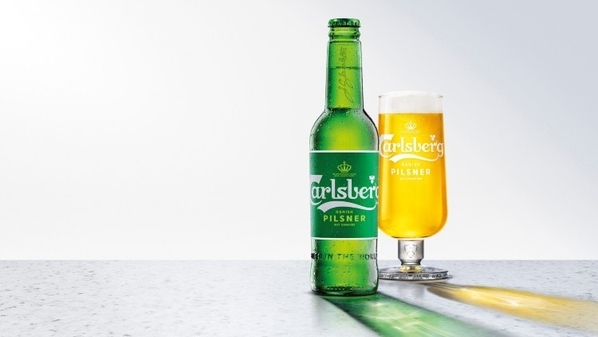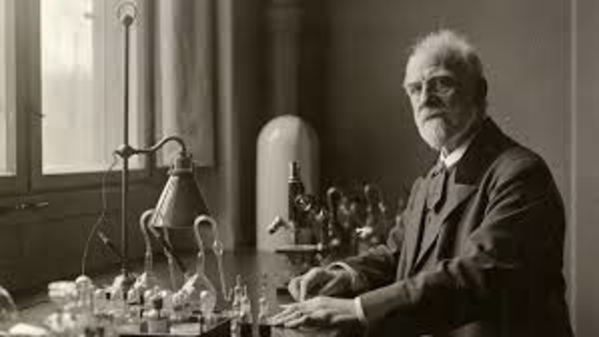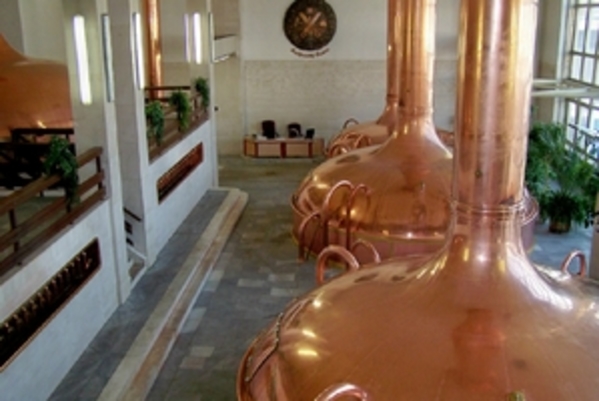Carlsberg and the meaning of lager
Added: Friday, April 19th 2019

Beer lovers should be indebted to Carlsberg. The global giant’s launch of a new “Danish Pilsner” has dumped decades of its claim – cue Orson Welles voice-over – that it brews “probably the best lager in the world”. Now the self-deprecating marketing for the new beer admits the group has allowed quantity to replace quality and it may not be the best on offer.
Carlsberg invited drinkers to give their views on the new beer, no doubt expecting some negative responses. The consensus on social media can be summed up as “I wouldn’t wash my socks in it.” I was asked for my views by Carlsberg’s London-based PR company, who sent me some samples. The bottled version said it was brewed in the UK – presumably this means the Northampton factory – while the can says “brewed in the EU”. I said this made a mockery of the new beer being called “Danish Pilsner”.
I added that 3.8 per cent ABV was too low to merit being called Pilsner: the classic Pilsner Urquell is 4.4 per cent and all claims to be a Pilsner should be judged against it. I found the Carlsberg beer to be thin and lacking in aroma and flavour.
It was unfortunate that I tasted the new Carlsberg beer alongside some samples of the Bohem lagers produced by a group of Czechs based in North London. They love the great beers of their homeland and know that to produce a true lager it has to be aged for some time. In the case of Bohem, lagering takes five weeks, not far short of Pilsner Urquell’s 44 days.
I had also been impressed by the organic lager brewed by the Stroud Brewery in Gloucestershire and made it my Beer of the Month in March. It also enjoys five weeks’ maturation. At the same time, Twitter was alive with people voicing their choice of lager beers brewed in this country. After some 40 years of mainstream lagers being thin, gassy and devoid of taste, craft brewers are now proving the style can be full-bodied and flavoursome, with a fine balance of malt and hops.

So for Carlsberg, the timing of its launch was unfortunate, though the media coverage will no doubt generate good sales. But the launch does give us the opportunity to discuss what precisely is meant by lager and where the style is going.
In 2017, Carlsberg hosted a large gathering of brewers and journalists in Copenhagen to celebrate 170 years since the brewing group was founded. During the course of discussions about brewing methods today and in the 19th century, one Carlsberg brewer announced: “We have taken the lagering out of lager.” Asked to explain this remarkable claim, he said that modern techniques, including new yeast strains, meant it was no longer necessary to age beer for weeks or months and a 21 days’ production regime was sufficient.
When I asked him what he would say to Budweiser Budvar in the Czech Republic, which famously ages its beer for 90 days, the Carlsberg brewer roared: “They are wasting their time!”
I met the new managing director of Budvar, Petr Dvorak, in London a few weeks later and asked him if he were indeed “wasting his time”, locking up beer in cellar tanks for 90 days. He laughed and said he would remain true to traditional methods.
He would be supported in this by Alastair Hook, founder of Meantime Brewery. Alastair trained at two renowned brewing schools, Heriot-Watt in Edinburgh and Munich Technical University at Weihenstephan. From his long experience, he said the longer you age a lager, the better it will get.
But ageing has gone out of the brewhouse window where the global brewers are concerned. At the Zywiec brewery in Poland, now owned by Heineken, when I asked how long the beer was lagered, I was told the entire production cycle is 21 days. That’s mashing, boiling and fermentation and scarcely different to an ale brewing regime.
I found the same cycles at Carlsberg’s subsidiaries in Finland and Russia while in the United States Anheuser-Busch says its version of Budweiser also has a 21 day cycle “but it can be reduced at times of high demand”.

It would be absurd to deny that the manner in which beer is made can never change. New strains of barley and hops replace older varieties and the scientific understanding of yeast has developed apace. Carlsberg , for example, no longer uses the yeast culture developed in the 19th century by its chief scientist Emil Christian Hansen (above). His pure strain of yeast changed lager brewing on a world scale and was given the scientific name of Saccharomyces carlsbergensis. But it’s no longer used by Carlsberg.
Lovers of good beer may be less interested in brewing science: they concentrate on taste. And there is no doubt that slow-brewed beer, using the finest ingredients, produces the best results.
Following the fall of communism, the British brewing group Bass bought Prague Breweries, which includes Staropramen, the Old Spring. When Bass installed a new fermenting room at Staropramen, it was careful to use horizontal tanks rather that upright conicals. The reason is that yeast works faster in conicals, converting more malt sugars into alcohol. Horizontal tanks, on the other hand, enjoy a slower fermentation with some sugars left in the brew, which give the full, rich and complex tastes of a Czech beer.
If you visit the Budweiser Budvar brewery in Ceské Budejovice (above), where tours are available, you will be taken to the ice-cold lager cellars where it’s possible to sample the beer after one, two and three months in tank. After one month, the beer is “green”, harsh on the palate. After two months, the harshness has gone, the beer still has some ragged edges but it’s ageing well, then at three months it’s a delight of honeyed malt and floral/spicy Saaz hops, with notes of apple and vanilla that form the signature of the classic Czech beer. Budvar is spending £80 million expanding the brewery to keep up with demand. So it must be doing something right.
In common with slow food, slow beer is the best. In 2017, to mark 170 years of brewing, Carlsberg recreated the first beer made with Hansen’s pure yeast culture. It should be made widely available but at present you have to go to the brewery. This brings a whole new meaning to “just popping out for a beer”. Drinkers would find it rather more interesting than a Danish Pilsner “brewed in the EU”.






